#pp webb
Photo
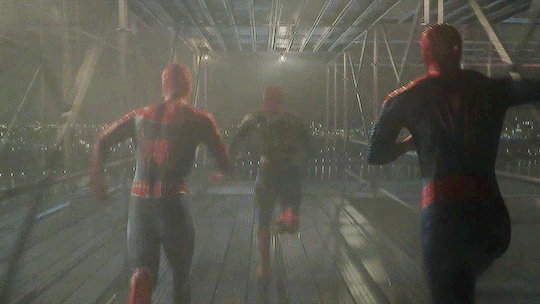

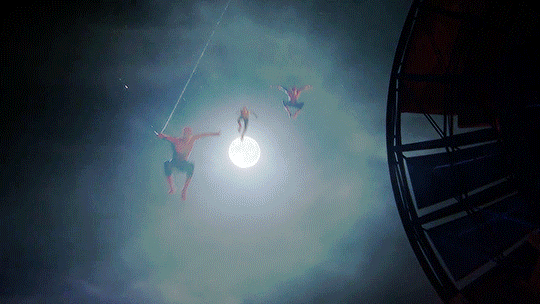
SPIDER-MAN: NO WAY HOME (2021) | dir. Jon Watts
#tom holland#andrew garfield#Tobey Maguire#peter parker#pp webb#pp raimi#spider man#spider man no way home#no way home#marveledit#dailyspiderman#filmgifs#moviegifs#thespidersource#spidermanedit#fyeahmovies#themarvelmultiverse#chewieblog#dailyavengers#marveladdicts#spideycentral#userstream#fyspiderverse#marvellegends#mcufam#usersource#*my gifs
3K notes
·
View notes
Text
The quotes below the cut are about the tension between consciousness raising and political action. All are from Alice Echols’ Daring to Be Bad: Radical Feminism in America: 1967-75.
Quote 1: p. 61
With Koedt's article, Firestone's summary of the Jeannette Rankin Brigade protest, and Sarachild's D.C. speech, "Funeral Oration for Traditional Womanhood," NYRW's Notes from the First Year was an implicit, and sometimes explicit, rejection of the politico analysis. Within two months of its publication, Evelyn Goldfield of Chicago's Westside group issued a rebuttal of sorts in the The Voice of the Women's Liberation Movement. Goldfield took women's groups to task for concentrating on consciousness-raising rather than action. And in contrast to those New York women who argued that women needed to organize separately to build a power base from which to attack male supremacy, Goldfield advised that if men were to be excluded initially from women's meetings, it be for the "tactical" reason that women had difficulty expressing themselves around men, and not as a "matter of principle." In fact, Goldfield argued that the very notion of a separate women's movement was divisive. She admitted that the bromide "there can be no liberation for women outside a general movement for liberation, and no such movement can exist without a movement for women's liberation" had failed to silence those who asked which movement came first. But Goldfield proposed shelving any further debate by declaring that radical women should henceforth "not think of the women's movement as separate but as a united force within the radical movement." She chastised the women of Notes for envisioning "the women's movement as very separate from other movement struggles," and declared that a "women's movement which confines itself to issues which only affect women can't be radical."
Quote 2: pp. 113-114
Some women at the conference also discussed the upcoming Counter-Inaugural demonstration to protest Nixon' inauguration. The action was being organized by the National Mobilization Committee to End the War in Vietnam (Mobe). Webb and Baxandall, in particular, had ties with people in the Mobe. In fact, Webb's husband, Lee Webb, had informed her that there was a slot available on the program for a women's liberation speaker. Barbara Mehrhof reports that during the car ride back from Lake Villa, Firestone, Atkinson, Koedt, Margaret Polatnik, and she discussed the proposed action. According to Mehrhof, all the women agreed that consciousness-raising, as it was practiced in NYRW, was leading to more consciousness-raising rather than to action. They discussed reorganizing the group, making it "more action and theory-based." Margaret Polatnik suggested that they "give back the vote" at the Counter-Inaugural protest, and the others agreed. According to Ellen Willis, the action was intended to demonstrate that "suffragism"—which they contended had eviscerated the first wave of feminism—was dead and that "a new fight for real emancipation was beginning." They announced the action at the next meeting of NYRW and welcomed others to join them in planning the protest. Firestone, Willis, Peslikis, Mehrhof, Kearon, Forer, Baxandall, Linda Feldman, Barbara Kaminsky, and Sheila Cronan were among those involved in planning the protest.
Quote 3: pp.142-143
In early April, Sheila Cronan proposed that for their next action the group hang a banner which would read "Liberty for Women: Repeal All Abortion Laws" from the Statue of Liberty. However, Cronan and her allies encountered technical problems in constructing the banner, and opposition to the action when Sarachild returned to the group. Sarachild argued that the action was poorly conceived and that the group's energy would be better spent writing a manifesto. When the group voted in mid-June to scuttle the action, the discussion reportedly "broke down into great recriminations."
The Statue of Liberty action became a point of contention because members disagreed about the importance of consciousness-raising. Not everyone in the group was as committed to consciousness-raising as Sarachild, Peslikis, and Mainardi. Certainly, Mehrhof, Kearon, Cronan, and Linda Feldman—who eventually left Redstockings to join The Feminists—felt that consciousness-raising should be de-emphasized. Even Firestone reportedly wanted the group to be more action-oriented. There were also disagreements about the pro-woman line. Mehrhot, Kearon, Cronan, and Feldman were its most vocal detractors. But Willis contends that both she and Firestone were far more psychologically oriented than Sarachild, Peslikis, and Mainardi of the pro-woman faction.
The tensions over consciousness-raising and the pro-woman line seem to have been exacerbated by Sarachild's re-entry to the group. She reportedly let the group know that she was returning to Redstockings despite her differences with the group. She then reportedly tried to recruit to the group women who she thought shared her political vision. Baxandall, who was at that time in a study group with Anne Forer, Judy Thibeau, and Helen Kritzler, was among those Sarachild succeeded in recruiting. Baxandall asserts that Sarachild told her that she was shifting the group's focus from action to consciousness-raising and that the meetings were, as a result, much improved. Indeed, the group became less action-oriented following the March 1969 abortion speak-out. The group did disrupt another all-male abortion panel at Cooper Union and helped to organize a number of joint actions. But from the spring of 1969 until its demise in the fall of 1970, the group devoted most of its time to consciousness-raising, organized c-r groups for new women, drafted its manifesto, and distributed movement literature.
4 notes
·
View notes
Text
"Mostly settled, complex hunter-gatherers exploiting an abundant range of resources, some Natufian settlements were small and temporary, but others reached 1000 m^2 with about 150 residents. Over time, settlements expanded into different areas, shaped by population growth, local ecology, and climatic perturbations. Trade in exotic stone such as obsidian developed, with some indication of regional cultural differentiation, but with no persuasive evidence of social ranking as found among some other complex hunter-gatherers…
Skeletal remains have been recovered of more than 400 Natufians. One female of 35-40 years from Nahal Oren apparently died of a blow to the head (Ferembach, 1959, p. 67). Three small samples also indicate the presence of violence, sometimes deadly. One of seven individuals, an unsexed adult, from around 10000 BC, had two healed and one unhealed cranial fractures, possibly the cause of death (Webb & Edwards, 2002). A reexamination of 17 individuals from around 9100 BC, found an embedded lunate point with no signs of healing in a vertebra of a mature adult male. Two others among the five adult males had healed cranial trauma (Bocquentin & Bar Yosef, 2004). In another study, 5 of 30 adult male skulls (16.7 percent) and 3 of 15 adult females (20 percent) had healed trauma, though only 1 of 487 upper limbs had a fracture (Eshed, Gopher, Pinhasi & Hershkovitz, 2010, pp. 125,127). Conflict violence? Yes. But Bar-Yosef, who has called for a deliberate effort to de-pacify the past (2010a), considering all that is known about Natufians, concludes that there is no evidence supporting the interpretation of war, just personal violence (2010b, p. 72). LeBlanc (2010, p. 41) posits three possible indicators of warfare among people such as the Natufian: settlements on defendable sites, deadly skeletal trauma, and specialized or stockpiled weapons, yet even this champion of de-pacification does not cite any instances. In contrast to the European Mesolithic, there is no evidence of war among Natufians.
…
Compared to the Natufian, PPNA population is denser, and with larger settlements of commonly 150-300 people. Evenly spaced villages cluster in favorable lowland environments near rivers, and are abandoned after a few centuries. A hierarchy of settlement sizes is apparent, down to small seasonal sites, with storage and cultic constructions in the larger ones. They are not in defendable locations, and without any indication of surrounding ditches or walls. Except by distance between major centers, there are no major cultural breaks. All areas are marked by convergence in technologies, and are linked in trade of exotic materials such as salt, bitumen, sea shells, and above all, obsidian, coming from multiple sources… Nothing in the construction or distribution of settlements suggests the presence of war.
A few of the largest sites appear to be nodes in trade networks, and probably cultic centers (Belfer-Cohen & Goring Morris, 2011, p. 213). Evidence for communal production and distribution, and for collective ceremonialism, is a persistent characteristic of the early Near East. My argument is that they are part of a peace system, resolving potential conflict and avoiding war. At the very start of the PPNA around 9650 BC, Wadi Faynan 16 in Jordan has a large public structure with complex internal structure (Mithen, Finlayson, Smith, Jenkins, Najjar, and Maricevic, 2011). The purpose is not obvious, but a ritual center seems likely. A more clear-cut (and amazing) ritual center is Gobekli Tepe in southeastern Turkey, centrally located on high ground visible for miles around, from 9130-8650 BC (Mithen, Finlayson, Smith, Jenkins, Najjar & Maricevic, 2011, pg. 360). It seems to have been free-standing, without accompanying settlement. No settlement remains have been found, and its monumental construction suggests a massive work commitment from populations throughout the surrounding area, leading to the inference that it was a means of creating a shared identity and culture at the very transition to the Neolithic (Schmidt, 2010, 253-254).
Jericho in Jordan is the best known settlement of the PPNA, reaching 500 inhabitants. After some centuries, the people of Jericho constructed a wall and a central tower, which was often taken as the earliest evidence of warfare, unique of its milieu (Roper, 1975, pp. 304-306). Bar Yosef (1986) reanalyzed those constructions, and found them unsuited for defense, and more likely for protection against flooding and mudflows, an interpretation that has been widely accepted. Over 500 burials at Jericho have been recovered from all periods (including PPNB), with some multiple burials. One burial that has 30 individuals lacks any sign of violence, which suggests that they died in an epidemic (Rollefson, 2010, p. 62). LeBlanc (2010, p. 45) mentions "a few … healed skull fractures" from Jericho and one other site, without elaboration.
Another huge, long-inhabited and very well-investigated PPNA site is Abu Hureyra in Syria. On a terrace above a flood plain, there are no signs of walls or towers. With up to 3,000 inhabitants in clearly planned structures, there must have been some form of authority. Yet there is no sign of social hierarchy - which suggests an alternative to standard evolutionary models that connect authority to chiefs. Authority may be vested in village councils of elders or lineage representatives, who live as others do. Recognized authority can be a precondition for peace. At Abu Hureyra, remains of approximately 162 individuals include multiple burials but they have no signs of violence. Disease seems likely. Points are found in a few burials, but their positioning suggests they are grave offerings, along with other objects… One young man, however, has an embedded point that was clearly lethal. "This is the only evidence that we have found for death by violence" (Moore et al., 2000, p. 288).
From the Southern Levant, several small sites spanning PPNA and PPNB yield 34 skulls for osteological analysis. One has a healed cranial fracture (Eshed, Gopher, Pinhasi, & Hershkovitz 2010, pp. 123, 127, 129). That is the paltry sum of evidence for war in the Levantine PPNA. The PPNA lasted for only 1,100 years, but that much time was more than enough in Europe for clear signs of war to emerge among Neolithic people.
This absence of evidence gains significance in contrast to the earliest Neolithic in the northern Tigris area, northern Iraq. … The Late Round House Horizon seems to develop out of the local Epipaleolithic Zarzian. Considerable differences exist on dates. Goring-Morris et al. (2009, pp. 210,212) go for calibrated 9750-8750, making it contemporary with the PPNA of the Levant. Village sites are located on the ecotone between floodplains and the Taurus. Two sites are important for evidence of war, the smaller and earlier Qermez Dere, and the nearby and later but overlapping Nemrik 9.
Qermez Dere is on high ground, with panoramic views of all approaches, and is protected on three sides by a steep drop. There are a few mace-heads, which may or may not be weapons of war. More significantly, it has a "spectacular development of projectile points" without any evident changes in hunting. Many points have broken tips, and may have "impacted with the settlement" (Watkins, 1992, pp. 68-69; Watkins, Baird, & Betts, 1989, p. 19). Nemrik 9 is bounded by steep wadis. It has mace heads, but also has skeletons with associated points (and no other grave goods) (Kozlowsky, 1989, pp. 25-28). One male skull contained two points, a second skeleton had a point in the pelvic area, and a third had a broken point next to a broken arm. These points are of a type that is unusual locally, suggested that attackers had come from some distance (Rollefson, 2010, p. 63). This convergence of different kinds of evidence supports the inference of war, the earliest in the Near East. Why war first appeared here is anyone's guess. Later firsts in the evolution from this same area are associated with the long-distance trade in Anatolian obsidian, as later routes went right through this area. But obsidian was rare at Qermez Dere (Watkins et al., 1989, pg. 22) and not mentioned at Nemrik 9 (Kozlowsky, 1989, pp. 27-28).
…
The second phase of the Pre-Pottery Neolithic, PPNB, laster longer, 8500-6400 cal BC. This was the early Holocene climatic optimum, especially favorable to cultivation - "a time of plenty as conditions improved from one year to the next" (Goring-Morris & Belfar-Cohen, 2011, p. 202). Cultivation shifted from earlier local experimentation to heavy reliance on cereals. Domesticated animal herds increased, use of wild resources declined, and the population exploded. Villages grew in size and stayed put for many centuries - still regularly spaced and with smaller settlements grading out from larger - and populations colonized formerly marginal areas. With northern and southern variations, some long-settled locations were abandoned, possibly due to changing water tables (Bar-Yosef, 2011, p. 182; Goring-Morris et al., 2009, pp. 212-214). Within this panorama, a new phenomenon of "mega-sites" approaching urban proportions developed and spread, transforming the social landscape, expanding "on an almost 'unlimited' scale in terms of food resources, due to the presence of various ungulates … and the availability of arable lands" (Gebel, 2004, p. 4).
Across a mosaic of locally specific adaptations, a deeply entwined interaction sphere of exchange and cultural convergence developed that extended past the old PPNA areas to include Anatolia and Cyprus (Asouti, 2006; Goring-Morris & Belfar-Cohen, 2011, pg. 202). Still, no fortifications or territorial separations are noted, at least until (possibly) the end, even though the presence of war is sometimes assumed (eg., Gebel, 2004, p. 9). In contrast, major ritual centers - consistent with the generally pronounced cultic orientation of PPNB remains - developed between major population centers, especially in the Northern Levant and southern Anatolia, which imply social cooperation across large areas. Gobekli Tepe, which began in the late PPNA, continued on, but other centers such as Nevali Cori and Cayonu became more common in the PPNB, often between settlements, often on high ground visible for miles around…
Roper's (1975, pp. 311-312) pioneering study of signs of war in the Near East finds nothing for a millennium after the questionable early wall of Jericho, the original mega-site, but some possibilities from the late seventh millenium. Extensively quoting Kenyon's report, the first ten PPNB occupation levels have no hint of a wall, but Phase XII and XIII trenches found massive stone slabs sloping up on top of fill, which Kenyon interpreted as defensive. Not likely. The structure was built in the midst of domestic units. The land behind it was filled in to its top, with house structures then built right up to the edge. Everything looks like a terrace, not a defensive wall. Besides that, for this key case, the extensive skeletal collection from PPNB Jericho does not display signs of violence, and multiple burials could be from epidemics.
Beidha (Southern Levant) level IV c. 6900-6600 BC is another candidate for war. Beidha was burned, with some culturally new elements found after, yet there are also continuities. With no clear signs of fortifications or any violence in skeletal remains, war remains nothing more than a possibility (Roper, 1975, pp. 312-313). Ras Shamra (Northern Levant) c. 6436 BC, possibly an early seaport, has a surrounding glacis of stone slabs over dirt, but that could be to prevent inundations (Roper, 1975, pp. 313-314). In Turkey Mellaart (1975, p. 90 ff) had interpreted Catalhuyuk joined structures with roof entrances as defensive - a point that seems destined to interminable debate - and a similar interpretation has been offered for aceramic Haclilar c. 7040 BC. Roper (1975, p. 316) notes the doubts, and considering all four sites, concludes that "there is no conclusive evidence … that warfare was feared or practiced, though it is likely." These four sites are frequently noted as evidence of Near Eastern warfare. It is not much of a record.
Post-Roper's-survey, Ghwair I, a smaller site from southern Jordan (Southern Levant, as are other PPNB sites to follow), 6800-6300 BC, has one infant with elaborate grave goods, and an elderly female with a point embedded inside her jaw (Simmon & Najjar, 2006, p. 90). At late PPNB Basta in Jordan, of 29 skulls, five had healed minor cranial fractures (Schultz, Berner & Schmidt-Schultz, 2004, p. 260). Another boy was killed by a blow to the head (Rollefson, 2010, p. 63). The violence at both those sites would be consistent with pronounced internal hierarchy. Late PPNB Ba'ja, a small site in mega-site times, is on a terrance in nearly vertical sandstone formations, approachable only through a steep and narrow passage. It certainly could be called defendable, and in that quality is noted as unique within its time. But from photographs, Ba'ja's terrace seems to be the only habitable ground in the vicinity, at least with access to water. No traces of contemporary settlements have been found anywhere around them (Bienert & Gebel, 2004, pp. 119-121, 135; Gebel & Bienert 1997, pp. 223, 229).
Ba'ja, Basta, and Beidha are not far apart, and this confluence of inconclusive clues makes it a promising area to look for concrete evidence of war. Yet as it stands, there is really nothing in any of those sites that even probably support the conclusion that war was present. The mega-sites should be able to raise a few hundred fighting men, and the effects of fighting at that scale most likely would be seen. On the contrary, in the north Jordan valley from the PPNB through the Pottery Neolithic, the countryside was spotted with small settlements in flat ground near water without any defensive characteristics (Roper, 1975, pg. 31). In sum, there is no persuasive evidence of war in the PPNB from the Southern Levant to Anatolia. Kuijt and Goring-Morris (2002, pg. 421) sum up the record for the entire Levant Pre-Pottery Neolithic, both A and B. They note the "near-total absence of evidence for interpersonal or intercommunity aggression in the PPN." Starting with the Natufian in 13100 BC, the close of the PPN around 6400 BC makes 6700 years in the Southern Levant without any good evidence of war.
…
The end of the PPNB, often called "collapse," included abandonment of many long-settled sites, and was close to and quite possibly related to the major climatic reversal and aridity in the eastern Mediterranean, known as the "8200 cal yr BP event" (Clare, 2010, pp. 15-17; Rollefson, Simmons, & Kafafi, 1992, p. 468; Weninger et al., 2006). The Pottery Neolithic, 6400-4500 cal BC (Goring-Morris et al. 2009:190), post-8.2 K cal BC, is marked most obviously by the development and immediate spread of pottery. It also saw a shift to smaller settlements, the digging of wells, more reliance on pastoralism, and sharp differentiation of local cultures. With climate-forced competition, invested labor in wells and livestock, and cultural differentiation, one might expect the emergence of warfare.
But war is not apparent in the record of the Southern Levant PN. Roper (1975, p. 317) notes settlements are small, on low, watered land. There is no sign of fortifications in the sixth millennium after the questionable wall at PNNB Jericho. Archaeological excavation in the Southern Levant has been intense in recent decades, as more real estate is developed (Rowan & Golden, 2009, p. 2). But 35 years after Roper, the evidence has not changed.
'Ain Ghazal was a central Jordan mega-site and major ritual center that was not abandoned with the PPNB "collapse." Occupied from 7250-5000 BC, no walls are indicated until Pottery Neolithic times (5500-5000 BC), when "stone enclosure walls abound … but just what these features enclosed is difficult to determine" (Rollefson et al., 1992, pg. 450). As these walls are found throughout the settlement, it is hard to see anything that suggests a defensive purpose (Rollefson, 1997). Differential burial of 112 skeletons suggests two classes of people, perhaps "a two-tiered 'patron-client' population" (Rollefson et al., 1992, p. 463). One of the "trash burials" has a thin flint blade, snapped at both sides, going through the skull (Rollefson, 2010, p. 63). it could be a killing, except "it is not entirely clear if this was intentional or rather the result of post-depositional processes (Kuijt & Goring-Morris, 2002, p. 422). What 'Ain Ghazal may be indicating is some form of hierarchy in a ritual-oriented central place, and increasing control as an alternative to warfare even in tough times for subsistence.
Although Clare (2010, pp. 18-19, 20, 23) takes a generally hawkish position in interpreting evidence for war, and points out a few possible indicators which are "to say the least, ambiguous," he recognizes a total absence of any "obvious fortification structures," a general reduction (with local variations) of tool-weapons of knives and arrowheads without any increase in sling ammunition, and concludes "harmonious times for the southern Levant might even be suggested, at least during the PN, and this is indeed the picture that is beginning to emerge." Clare suggests that climatically driven hard times may have led to new forms of cooperation.
The issue of maces is fully joined in the Pottery Neolithic Southern Levant (Rosenberg, 2010, pp. 210-211, 214). Many maceheads are found, but they are small (most under 5 cm diameter) and with very thin shaft holes (most 10-15 mm, some down to 6 mm). These maces could not "withstand a serious blow." He concludes, "most early maceheads were never used in combat." Rosenberg speculates on possible ritual uses. A reasonable interpretation is that they were symbols of authority. This does not necessarily imply a social ranking or "chiefs." It could be the authority of a community, represented by elders and wise people, perhaps with cultic backing (Kuijt & Goring-Morris, 2002, pp. 420-423). As noted previously, recognized authority is a way of regulating conflict, and could be central to avoiding war. Maces may be part of a system of peace. Adding the PPN to what came before in the Southern Levant, that makes 8600 years without signs of war.
Yet across the northern Near East, evidence for war is substantial in the Pottery Neolithic. Around the northern Tigris, close to Qermez Dere at the border between mountains and plains, is seventh millennium Tell Maghzaliyah. Several centuries after it was first occupied, a major defensive wall was raised, possibly with one or more towers (Bader, 1993, pp. 64-66). This is the earliest known fortification in Mesopotamia (Munchaev, 1993, p. 250), and may be the earliest in the Near East. Maghzaliyah appears to be of different cultural tradition than Qermez Dere, with some Anatolian affinities, and its people had a thousand times more obsidian (Watkins et al., 1989, p. 22). This is the debouchment where Anatolian trade comes down to the plains. Maghzaliyah could be a node in what would become (if it was not already) an enduring system of long-distance trade routes in Anatolian obsidian (Healey, 2007, pp. 262-263), certainly the most important exotic good in the Neolithic (Yellin et al., 1996, p. 366). Cross-culturally, different aspects of trade control are often critical issues in practices of war (see Ferguson, 1999, pp. 414-415). A linkage is suggested in this case, since erection of the wall coincided with a dramatic shift from obsidian to flint, suggesting that somebody was cutting into the flow of trade from Anatolia (Bader, 1993, p. 66).
Turning to Anatolia itself, the origin of Neolithic ways is still poorly understood. In central Anatolia, clear indicators of a Neolithic way of life appear near the end of the Pre-Pottery Neolithic, between 7400-7100 cal BC. Settlements remain small and sporadic until about 6500, around the start of the PN, with level 6 at Catalhuyuk - which as noted early is perennially debated as an exemplar of war. A significant development for this chapter's interest in peace is that communal ritual centers disappear from Anatolia over the PN, with religious practices moving into domestic contexts (Ergogu, 2009, 129). If major ritual centers had unified scattered people, their decline could make war more likely. Yet the painted representations at Catalhuyuk do not suggest war. There are life scenes of hunting, of domesticated plants and animals, and of vultures picking flesh from headless bodies - but no portrayals of war (Erdogu, 2009, pp. 133-135). The vulture scenes could stand as a warning against it. They may have had reason to worry. War was on the way.
A case has been made (Ozdogan, 2011) and challenged (Asouti, 2009; Thissen, 2010) that climatic deterioration associated with the 8200 cal K BP event drove late Neolithic subsistence shifts within Anatolia, and the spread of domestication from there to the Balkans. Consistent with that line of thinking, Clare et al. (2008, pp. 71-77) discuss four Late Neolithic/Early Chalcolithic sites in the densely settled Lake District (Pisidia) of the south-western Anatolian plateau: Hacilar, Kurucay Hoyuk, Hoyucek Hoyuk, and Bademagaci Hoyuk. Between them are multiple indicators of war: major conflagrations, some with unburied bodies, some with a subsequent hiatus or replacement by another group, fortifications with walls and towers, and large numbers sling missiles. During (2011, pp. 72-73) questions the defensive interpretation of structures at Hacilar and Kurucay (and elsewhere) and argues that the postulated signs of war postdate 6000 BC, centuries too late to be linked to the 82 cal K event. These are valid points. The most compelling evidence of war at Hacilar (II) is dated to 5600 BC (Roper, 1975, pg. 321).
Signs of war in other Anatolian sites also date to the early sixth millennium. Domuztepe of the Halaf culture has a pit (5700-5600 BC) with 40 possible victims of violence (Erdal, 2012, p. 2). Guvercinkaya, 5210-4810 BC, was built on top of a steep rock outcropping. During (2011, pg. 75) emphasizes that a nearby contemporary settlement was not fortified, but that would be consistent with fortifications on trade nodes. Down from the highlands on the coast, between Anatolia and Cyprus, the port settlement of Ras Shamra was destroyed by fire around 5234 BC. An apparent defensive wall went up somewhat later, possibly associated with the arrival of Halafians, a people originating in Northern Mesopotamia (Akkermans 2000), who seem to have brought war along with them (Roper, 1975, p. 318). The Halafian culture is not well-understood, but they had an unusual immersion in obsidian commerce. "They apparently engaged in directionally controlled, nonreciprocal, extensive trade which seems to have been more structured and more intensive (e.g., imported obsidian comprising three-fourths or more of the chipped stone industry) than we might expect in a tribal society" (Watson & LeBlanc, 1990, pp. 137).
While climatic deterioration may be related to this widespread pattern of war, a much stronger causal connection appears to involve key nodes of the trans-Anatolian obsidian trade. Obsidian from Anatolia was found all over the Near East. Pisidia was not a center of obsidian production, which came from Central Anatolia (Clare, Rohling, Weninger, & Hilpert, 2008, p. 82). Sources of critical goods usually do not control trade, those at passage bottlenecks do. Ozdogan (2011, p. 55) notes final Neolithic "turmoil" in Anatolia, and that for the first time, there appears to be a monopolization of trade patterns. Monopolization is the key link between war and trade.
On the Turkish coast, Mersin XX was destroyed and then reoccupied by the Halafians. A similar sequence occured at Chagar Bazar in northern Syria, and level 8 of Sakce Gozu. Below the mountains but close by, Ras Shamra Vb, also on the coast, and basal Tell Halaf (c. 5837 BC) appear to be "fortified Halafian settlements." "It is significant that all the sites that exhibit destruction or have fortifications are located on the east-west overland trade route (or subsidiary connections to this route)" (from Nineveh in northern Iraq through the Northern Levant, to Mersin, and up through the Taurus). "One may hypotheize that the Halafians wanted and took control of a portion of this great trade route" (Roper, 1975. pp. 323-325). Sixth millennium Halaf may be the first cultural group to expand via war.
…
The Anatolian trade network and accompanying warfare continued through the Chalcolithic (4500-3300 BC), with (probable) fortifications at Cadir Hoyuk and Kurucay level 6 (During 2011, p. 75). The Early Bronze Age Anatolia trade network included a wide array of materials and products. It expanded to reach from the northern edge of Mesopotamia to the Aegean and Greece (including Troy), and was characterized by centralized urban centers with massive fortifications (Sahoglu, 2005, pp. 339-341). "Signs of systematic violence become ever more pervasive in Anatolia during the Bronze Age (ca. 3000-1200 BC), starting especially in the EBA (ca. 3000-2000)" (Erdal, 2012, p. 2).
Considering this record against all the other records examined here leads to a major conclusion: by the early sixth millennium, along the trade corridors of Anatolia, the Western world's first widespread, enduring social system of war had begun. The inclusion of Troy serves to extend that point: this is the start of a system of war that flows down in a river of blood to our present.
On the Turkish coast around 4300 BC, Mersin was a true fort or citadel with firing ports, offsets covering turns in the walls, a protected gateway and tower, and possible barracks for specialized soldiers (cf. During, 2011, pp. 74-75). After about a century, Mersin was destroyed, and the site occupied by Ubadian people (Roper, 1975, pp. 328-329). At the eastern end of the Northern Levant, even more dramatic developments ensuded in the Late Chalcolithic.
In northeast Syria, close to the earlier Tell Maghzaliyah and Qermez Dere, Tell Brak and Hamoukar were emerging as urban centers by 4200 BC. Each was a major entrepot for northern obsidian (Khalidi, Graute, & Boucetta, 2009; Oates, 1982, p. 62). … Findings at Brak particularly (but the less excavated Hamoukar looks similar), have upended conventional notions of southern Mesopotamia as the heartland of cities, preceding known southern developments by several centuries…
Surrounding Tell Brak were massive fortifications, with towers, gates, and guardhouses (Oates et al. 2007, p. 588-589). Four mass graves have been found from 3800 to 3600. The two best known suggest a simultaneous internment of hundreds, with demographic patterns and casual disposal suggesting purposeful killing rather than an epidemic. Based on several factors - such as the absence of peri-mortem skeletal trauma and the formidability of defenses - researchers speculate that this represents internal violence rather than attacks from the outside (McMahon, Soltysiak, & Weber, 2011). That is not far-fetched, given Gilgamesh's oppression of his own people to build his massive walls (Garder & Maier, 1985, pp. 57, 67), and the possibility that local food production was stressed by cooling and increased aridity (McMahon et al., 2011, p. 217). Hamoukar, however, was attacked by outsiders. Recent excavations indicate that around 3500 BC, a massive bombardment by thousands of sling bullets weakened its 10-foot high wall, which then collapsed in a conflagration. Subsequent levels were dominated by Uruk pottery, suggesting the south had conquered the northern trade portal to Mesopotamia (Bower, 2008; University of Chicage, 2005)." - R. Brian Ferguson, "The Prehistory of War and Peace in Europe and the Near East," (from War Peace and Human Nature: The Convergence of Evolutionary and Cultural Views).
#history#prehistory#deep history#war#copied cause relevant to my Blindsight vampire fanfiction lol#deciding whether to set it in the PPN or the PN or the Copper Age#and how to portray the humans#tempting in this context to interpret a lot of those Natufians with skeletal trauma as vampire victims#‟no clear evidence of war but lots of people with fight injuries‟ sounds like what you might see in a prey species
11 notes
·
View notes
Text
A Brief History Of Fabianism: Co-opting The Left And Right
"..
Early Fabians tended to downplay their interest in—or debt to—Karl Marx but there can be little doubt that they were inspired by his work, directly or otherwise. I say directly because Marx lived in London from 1849 up to his death in 1883, and spent countless hours working on his Das Kapital in the reading room of the British Museum (which then housed the British Library collection). George Bernard Shaw was introduced to Marx's work by Henry Hyndman, who discovered The Communist Manifesto in 1864 and formed Britain's first socialist political party, The Social Democratic Federation, in 1881. He was the first author to popularize Marx's works in English and introduced them to Shaw around 1882. The Fellowship of the New Life (which later became the Fabian Society) was founded the following year, in 1883, the year of Marx's death.1 Shaw described Marx's Kapital as not a treatise on Socialism: it is a jeremiad against the bourgeoisie…. It was addressed to the working classes; but the working man respects the bourgeoisie, and wants to be a bourgeois. Marx never got a hold of him for a moment. It was the revolting sons of the bourgeoisie itself…like myself, bourgeois, who painted the flag red. The professional and penniless younger son classes are the revolutionary element in society: the proletariat is the Conservative element…. Marx made me a Socialist and saved me from becoming a literary man. (1949, pp. 49–50) The Fellowship of the New Life dissolved in 1898, after which the Fabian Society grew to become a preeminent academic society in the UK. Many Fabians participated in the formation of England's Labour Party in 1900. The party's constitution, written by Sidney Webb, borrowed heavily from the founding documents of the Fabian Society. As seen in the Labour Party Foundation Conference in 1900, the Fabian Society claimed 861 members and sent one delegate. (See World Heritage Encyclopedia, no date given.) The Society grew throughout 1930–1940 over many countries under the British rule, and many future leaders of these countries were influenced by the Fabians during their struggles for independence from the British. These
leaders included India's Prime Minister Jawaharlal Nehru (whose fashion sense—“the Nehru jacket”—influenced the counterculture2), Obafemi Awolowo, who later became the premier of Nigeria's defunct Western Region, and the founder of Pakistan, barrister Muhammad Ali Jinnah. Lee Kuan Yew, the first prime minister of Singapore, had a political philosophy strongly influenced by the Fabian Society. In the twenty-first century, the Fabian Society's influence is felt through Labour Party leaders and former prime ministers of Great Britain, such as Tony Blair and Gordon Brown. The name Fabian was apparently suggested by the spiritualist Frank Podmore, after the brilliant third century Roman general, Quintus Fabius (Maximus Verrucosus, 303-203 BC). Fabius was made a dictator in 221-217 BC, and, with a small band of fighting guerrillas and superior cunning, successfully defended Rome from Hannibal's mighty Carthaginian army. Fabius's tactics involved “gradualism” and “terrorism,” delaying tactics which were greatly disapproved of by his soldiers and the civilians, and which earned him the name of “the Delayer.” After these tactics triumphed, however, his skill and wisdom was more appreciated. Moving past the more or less established history of Fabianism, I found a compelling, and damning, description of the Fabian plan as central to the whole “New World Order” millennia-long Conspiracy (big “C”), in an archived essay called “Fabian Influence on Council Developments in New Zealand” (Christian, 2006). One premise of the information was that the Fabian Society was behind the various Labour movements in Britain and that it concealed elitist, and even capitalist, interests. This was something I could vouch for from direct experience, having grown up in a wealthy socialist family (we were called “champagne socialists”) who were above all business people but also actively involved in local (and, I was slowly discovering, global) politics, in seemingly reformist and New Left movements such as the Campaign for Nuclear Disarmament (CND), all having, sometimes obvious sometimes less so, ties to the Fabian Society..."
The Vice of Kings: How Socialism, Occultism and The Sexual Revolution Engineered A Culture of Abuse
2 notes
·
View notes
Text
No Dark Matter James Webb Telescope Observes Unusual Galaxies during Cosmic Dawn
“No Dark Matter” James Webb Telescope Observes Unusual Galaxies during Cosmic Dawn
https://www.youtube.com/watch?v=jMxgGEXlODo
“No Dark Matter” James Webb Telescope Observes Unusual Galaxies during Cosmic Dawn
✅Stay Connected With Me.
🔔Unlock The Mysteries Of The Universe. Hit That Subscribe Button And Join Kurious Media In Exploring The Galaxies And Beyond: https://ift.tt/Usuk1PO
✅ For Business Inquiries: [email protected]
=============================
✅ Recommended Playlists
👉Best of Kurious Media
https://www.youtube.com/watch?v=qUBu5pyukRg&list=PLVxoycF8A9gKy-lbyhJ_-5gC_A-i2DJm1&pp=iAQB
✅ Other Videos You Might Be Interested In Watching:
👉 The Largest Supernova Explosion In The Universe Is Happening in 2023!
https://www.youtube.com/watch?v=7PuzFBFp1-A
👉 The Universe Is Full Of Scary Things. Here Are The 10 Scariest
https://www.youtube.com/watch?v=vrEX008AACY
👉 What You Didn’t Know About The Universe! You Will Be Shocked!
https://www.youtube.com/watch?v=jfXnhurAbKI
👉 Top 7 Most Unusual Structures In The Universe
https://www.youtube.com/watch?v=nBPZ13eo338
👉 Massive Unidentified Object Twice the Size of Milky Way is On the Lose
https://www.youtube.com/watch?v=z9iOnyToffk
=============================
✅ About Kurious Media.
Welcome to my cosmic journey on YouTube. Dive into fascinating research, and uncover the universe alongside me. As an avid space enthusiast, I want to see what lies beyond our blue planet. Join me as we learn and discover the mysteries of space together.
For Collaboration and Business inquiries, please use the contact information below:
📩 Email: [email protected]
🔔Journey Beyond The Stars With Kurious Media! Subscribe Now For The Latest Discoveries And Research In Space: https://ift.tt/Usuk1PO
=================================
#spaceexploration #jameswebbtelescope #lhs475b #exoplanet #nasa #astrophysics
Disclaimer: We do not accept any liability for any loss or damage incurred from you acting or not acting as a result of watching any of my publications. You acknowledge that you use the information I provide at your own risk. Do your research.
Copyright Notice: This video and my YouTube channel contain dialog, music, and images that are the property of Kurious Media. You are authorized to share the video link and channel and embed this video in your website or others as long as a link back to my Youtube Channel is provided.
© Kurious Media
via Kurious Media https://www.youtube.com/channel/UCGmq-4Z9MC2uipzlrGtTkbw
January 20, 2024 at 04:35AM
#Cosmic#Discoveries#blackhole#spaceindustry#Voyager2#GrandTour#Voyager#spacecraft#Largest#Supernova#Explosion#Universe#Nasa#SupernovaExplosion
0 notes
Text
Critical Article
Caroline Webb’s article claims that Howls Moving Castle invites readers to re-evaluate the perceptions that are placed upon witches and crones by society. Howls Moving Castle challenges the classic narrative and conventional expectations and perceives these types of characters as heroes compared to the demonized figures society claims them to be. For instance, Howl is described as "heartless,” though upon further examination, Howl is only ‘heartless’ because of a sacrifice he made, which was giving his soul to Calcifer, a demon, to keep him alive. Howls act of selflessness is the reason why he doesn’t have a soul, but he can also be confused with the general outlook on witches and crones. Thus, Howls Moving Castle pushes the boundaries of the conventional “witch” figure and prompts readers to reconsider.
Webb, Caroline. "'Change the story, change the world': witches/crones as heroes in novels by Terry Pratchett and Diana Wynne Jones." Papers: Explorations into Children's Literature, vol. 16, no. 2, Dec. 2006, pp. 156+. Gale Academic OneFile, link.gale.com/apps/doc/A161909183/AONE?u=otta77973&sid=bookmark-AONE&xid=4c1b3b6a. Accessed 15 Nov. 2023.

0 notes
Text
Barry G. Webb, Job (EBTC)
Barry G. Webb, Job (EBTC, @LexhamAcademic) -
Webb, Barry G. Job. Evangelical Biblical Theology Commentary. Bellingham, Wash.: Lexham Press, 2023. xx+499 pp.; Hb.; $48.99. Link to Lexham Press
Barry G. Webb serves as senior research fellow emeritus in Old Testament at Moore Theological College in Newtown, Australia. He wrote the NICOT volume on The Book of Judges (Eerdmans 2012). He wrote his Ph.D. dissertation on Judges under David Clines…
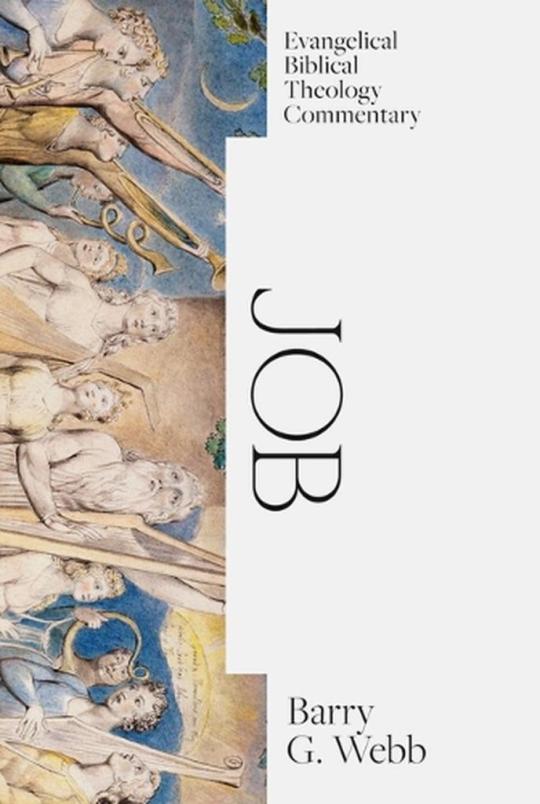
View On WordPress
1 note
·
View note
Text
Know About Atrial Septal Defect

An atrial septal defect is a birth defect wherein there is a hole in the wall that divides the atria or the upper chambers of the heart. This hole may differ in size and in many cases may close on its own. However, in some cases, it may require surgery. An atrial septal defect is one of the common kinds of congenital heart defects or those defects that are present at birth. A baby’s heart develops during pregnancy and thus there are several openings in the wall that divides the upper chambers of the heart. These holes generally close during pregnancy or within a short span of time after birth. However, if one of these openings do not close, a hole is left and this is termed an atrial septal defect (Geva, T., Martins, J.D. and Wald, R.M., 2014. Atrial septal defects. The Lancet, 383(9932), pp.1921-1932). This hole increases the amount of blood flowing through the baby’s lungs and with time, it causes damage to the blood vessels in the lungs. On the other hand, damage to the blood vessels in the lungs can lead to complications as the child grows and enters adulthood and some of these problems may include high blood pressure and heart failure. In addition to these, other complications may include an increased risk of stroke and abnormal heartbeat.
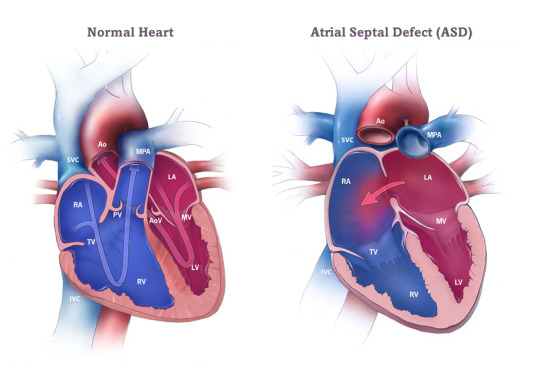
Diagnosis of an Atrial Septal Defect
An atrial septal defect can be diagnosed during pregnancy and may also be detected after the child is born. However, in several cases, it may be left undetected until the child reaches adulthood. During pregnancy, a woman may go for different kinds of screening tests or prenatal tests to diagnose birth defects as well as other conditions. An atrial septal defect can be seen by an ultrasound (Webb, G. and Gatzoulis, M.A., 2006. Atrial septal defects in the adult: recent progress and overview. Circulation, 114(15), pp.1645-1653). However, this is usually dependent on the location and the size of the hole. Whenever an atrial septal defect is suspected, specialists are required to confirm the diagnosis. On the other hand, genetic testing may also be helpful if the patients or any of their biological family members have congenital heart disease. An atrial septal defect is usually present at birth. However, many babies may not have any signs and symptoms. For the best insights on this condition, follow DocTube.
Symptoms of an Atrial Septal Defect
Some of the most common signs of untreated atrial septal defect may comprise the following:
Difficulty breathing
Frequent lung or respiratory infections
Tiring when feeding the baby
Shortness of breath while exercising or being active
Skipped heartbeat
Swelling of the stomach area, feet or legs
A whooshing sound or a heart murmur that is heard with a stethoscope.
As stated above, in many cases, atrial septal defects are not diagnosed until a child reaches adulthood. One of the best and commonest ways this condition is diagnosed is by detecting murmurs when listening to the patient’s heart with a stethoscope. The healthcare professional usually requests some other tests to confirm the diagnosis if a murmur is heard or if other symptoms are present in the patient. Echocardiogram is the most common test which includes conducting an ultrasound of the heart.
Treatment of an Atrial Septal Defect
Atrial septal defects may be closed through percutaneous or non-surgical repair or through surgical methods. The kind of treatment usually depends on diverse factors such as the size and the type of defect and how the condition is affecting the patient’s heart (Liava’a, M. and Kalfa, D., 2018. Surgical closure of atrial septal defects. Journal of thoracic disease, 10(Suppl 24), p.S2931). It also depends on other conditions that the patient may have like coronary artery disease, valve disease or pulmonary hypertension. Small atrial septal defects usually do not need any repair. On the other hand, larger atrial septal defects must be treated and repaired even if they are not causing any problems. This is important as this helps to prevent many different kinds of serious complications in the future. Repair becomes essential whenever a person exhibits any signs of lung or heart damage. Healthcare professionals recommend prompt treatment if the right side of the heart is larger than normal or if there is a significant amount of shunting or flow of blood through the ASD.
Medications may be prescribed for treating some symptoms of atrial septal defect. However, it is important to note that there are no medications that can close this hole. In addition, if the person suffers from pulmonary hypertension, he must take relevant medications before the repair procedure is done. This is important as such medication helps to treat pulmonary hypertension while making the procedure safer for the patient. Closure of the hole is commonly recommended for adults who have many and severe symptoms. This closure may be done during open-heart surgery or cardiac catheterization. After such procedures are done, follow-up care depends on the patient’s age, the size of the defect and the presence of any other birth defects.
Prevention of an Atrial Septal Defect
It is important to note that there is no particular way to prevent this defect. They may develop when the fetus is still present in the uterus. However, proper prenatal care can have a substantial impact on the fetus’s chance of developing congenital heart disease. So if you are planning a pregnancy, it is important for you to consider the following factors:
Avoid drinking alcohol
Quit smoking and using all kinds of tobacco products
Avoid secondhand smoke as much as possible
Avoid all forms of recreational drugs
Talk to your doctor about the common prescription medications that you are taking and if they are prone to affect your pregnancy in any manner.
0 notes
Text
Last Four MV's From The Collection Owned By The Late Chairman of The Owners Club
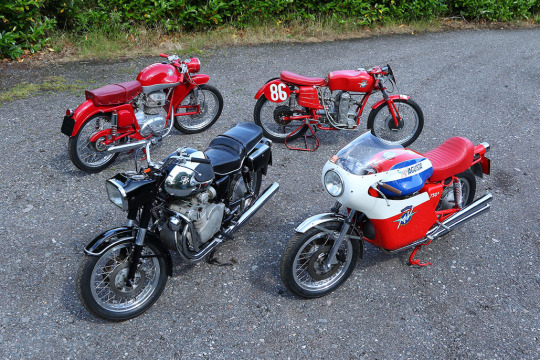

Last four cherished MV Agustas from the motorbike collection owned by the late chairman of the MV Agusta Owners Club of Great Britain, Alan Elderton, leads Silverstone Auctions Shuttleworth Motorcycle Sale on July 30th.
This stunning £140,000 - £165,000 Collection includes a showpiece MV Agusta 750S featured in many magazines and a MV Agusta 125cc production racer which saw action with Norman Webb at the Isle of Man TT and the increasingly rare MV Agusta 600 Tourer.
SEE ALL DETAILS ON THE FOUR BIKES IN CATALOGUE NOTE LINKS BELOW
When speaking of MV Agustas superlatives are commonplace, but when viewing this collection of four beauties, put together by Alan Elderton, the late chairman of the MV Agusta Owners Club of Great Britain, including race and road bikes, one is almost lost for words. These uniquely stunning motorcycles, kept for the last 14 years by his widow Kaye, are the last and most cherished bikes of his incredible collection - each one is an important part of the Agusta story.
Mark Bryan of Silverstone Auctions, comments: “This collection provides true fans of the MV Agusta marque with an unrepeatable opportunity to own one of the best of their kind. Alan Elderton was an Agusta connoisseur and a distinguished figure in the Agusta world.”
This not to be missed quad of motorcycles - the Alan Elderton Collection, will be presented at The Silverstone Auctions Shuttleworth Sale, Old Warden Park, Bedfordshire, SG18 9EP on 30th July, with a viewing day on the 29th July. More details on the motorcycles can be found on the Silverstone Auctions website www.silverstoneauctions.com or by calling motorcycle specialist Mark Bryan on +44 (0) 07958 107974.
Silverstone Auctions is inviting further entries for the Shuttleworth Sale, with the catalogue closing on the 30th June. Visitors to the auction will also be able to explore the estates working aeronautical and automotive museum as well as its Regency Swiss Garden and grounds.
The Agusta brand is an Italian legend. MV Agusta produced their first prototype, called “98”, in 1945 and in 1948, the company built a 125cc two-stroke single to participate in the Italian Grand Prix in Monza. It won and this launched the legend. MV Agusta went on to dominate Grand Prix racing, winning 17 consecutive 500cc world championships. In 2008 Harley-Davidson bought MV Agusta for $109 million. When we talk speed MV Agusta is up there. The MV Agusta F4 1000 topped 186mph.
More about the four Motorcycles
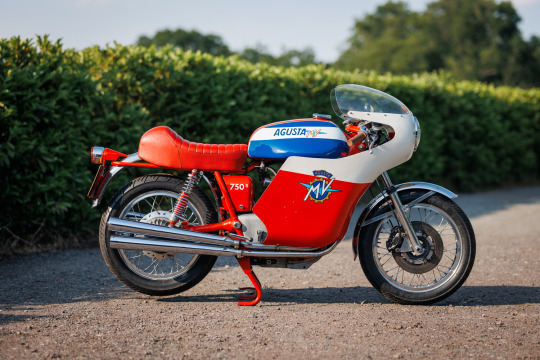
MV Agusta 750S – Guided at £60,000-£70,000
https://www.silverstoneauctions.com/sa087-lot-20767-1973-mv-agusta-750s-743cc?el=20767&pn=1&pp=100

MV Agusta 600 Tourer - Guided at £45,000-£50,000
https://www.silverstoneauctions.com/sa087-lot-20768-1968-mv-agusta-4c-tourer-592cc?el=20768&pn=1&pp=100

MV Agusta Monoalbero - Guided at £25,000 -£30,000
https://www.silverstoneauctions.com/1953-mv-agusta-125-monoalbero-rec12558-3-shuttle-0723?el=20769&pn=1&pp=100

MV Agusta CSS Disco Volante - Guided at £10,000-£15,000
https://www.silverstoneauctions.com/1955-mv-agusta-css-disco-volante-rec12558-4-shuttle-0723?el=20770&pn=1&pp=100
More auction news can be found on our dedicated page here: Motorcycle Auction News
For more information on Silverstone Auctions head to the official website: silverstoneauctions.com/
Read the full article
#ClassicMotorcycleShows#ClassicMotorcycles#MotorcycleNews#NECClassicMotorShow#SilverstoneAuctions#TheShuttleworthMotorcycleSale
0 notes
Photo

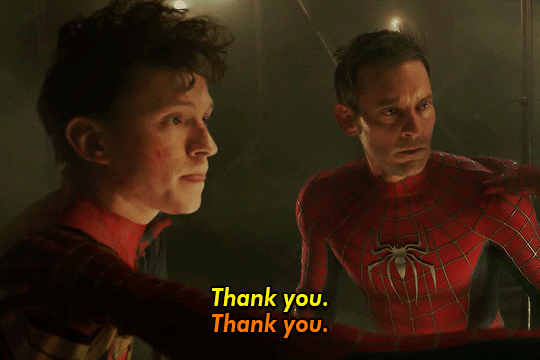

SPIDER-MAN: NO WAY HOME (2021) | dir. Jon Watts
#andrew garfield#peter parker#tom holland#tobey maguire#pp webb#pp raimi#spider man#spider man no way home#no way home#marveledit#dailyspiderman#filmgifs#moviegifs#thespidersource#spidermanedit#fyeahmovies#themarvelmultiverse#chewieblog#dailyavengers#marveladdicts#spideycentral#userstream#fyspiderverse#marvellegends#mcufam#usersource#*my gifs
3K notes
·
View notes
Text
Multitouch table

#Multitouch table serial#
(eds.) Handbook of Educational Psychology, pp. Webb, N.M., Palincsar, A.S.: Group processes in the classroom. In: Proceedings of the Fifth International Conference on Ubiquitous Computing, pp.
#Multitouch table serial#
Shen, C., Everitt, K., Ryall, K.: UbiTable: Impromptu Face-to-Face Collaboration on Horizontal Interactive Surfaces. For more than a decade, Ideum has designed and built multitouch tables, touch displays, open frame monitors, touchless devices, and other interactive devices. Getac F110 Tablet, 11.6 inch HD Multi-Touch, Intel Core i7-4600U 2.10GHz, 128GB SSD, 8GB RAM, Wi-Fi, Bluetooth, 4G LTE, Webcam, Rear Camera, RFID, Serial Port, Windows 10 Pro (Renewed) 3 69997 Get it Thu, Jul 28 - Wed, Aug 3 FREE Shipping Only 1 left in stock - order soon. Schneider, J., Derboven, J., Luyten, K., Vleugels, C., Bannier, S., De Roeck, D., Verstraete, M.: Multi-user Multi-touch Setups for Collaborative Learning in an Educational Setting. Piper, A.M., O’Brien, E., Morris, M.R., Winograd, T.: SIDES: a cooperative tabletop computer game for social skills development. In: Proceedings of Graphics Interface 2007, pp. GestureTeks award-winning Illuminate Multi-Touch Table is a user-friendly surface computing technology offered in nearly any shape or size to suit any. Nacenta, M.A., Pinelle, D., Stuckel, D., Gutwin, C.: The effects of interaction technique on coordination in tabletop groupware. Ideum Inline multitouch displays let you design. Marshall, P., Fleck, R., Harris, A., Rick, J., Hornecker, E., Rogers, Y., Yuill, N., Dalton, N.S.: Fighting for control: children’s embodied interactions when using physical and digital representations. Embedding interactive touch displays in conference tables creates highly productive collaborative spaces. (ed.) Co-operative Learning: Theory and Research, pp. Johnson, D.W., Johnson, R.T.: Co-operative learning and achievement. Hoppe, H.U., Lingnau, A., Machado, I., Paiva, A., Prada, R., Tewissen, F.: Supporting Collaborative Activities in Computer Integrated Classrooms - the NIMIS Approach. Harris, A., Rick, J., Bonnett, V., Yuill, N., Fleck, R., Marshall, P., Rogers, Y.: Around the table: are multiple-touch surfaces better than single-touch for children’s collaborative interactions? In: Proceedings of CSCL, pp. Rick, J., Rogers, Y., Haig, C., Yuill, N.: Learning by doing with shareable interfaces. IEEE Computer Society, Washington, DC (2004) These cookies track how you use our website in order to contact you through different sales and marketing activities.Cappelletti, A., Gelmini, G., Pianesi, F., Rossi, F., Zancanaro, M.: Enforcing Cooperative Storytelling: First Studies. Vqa_vid, vq_utm_source, vq_utm_term, vq_utm_medium, vq_initial_source These cookies track how you use our website in order to contact you through different sales and marketing activities. Further information: LinkedIn Cookie Policies These cookies track how you use our website in order to show you relevant advertising on the LinkedIn advertising network. Further information: Twitter Cookie Policies These cookies track how you use our website in order to show you relevant advertising on the Twitter advertising network. Further information: Facebook Cookie Policies These cookies track how you use our website in order to show you relevant advertising on the Facebook advertising network. Further information: Microsoft BING Cookie Policies These cookies track how you use our website in order to show you relevant advertising on the Microsoft BING advertising network. MR, MUID, MUIDB, SRCHD, SRCHHPGUSR, SRCHUID, SRCHUSR Further information: Google Cookie Policies These cookies track how you use our website in order to show you relevant advertising on the Google advertising network.

1 note
·
View note
Text
Phytochemical composition and antioxidant capacity of the aqueous extracts of Malva sylvestris L. and Malva pseudolavatera Webb & Berthel.
Phytochemical composition and antioxidant capacity of the aqueous extracts of Malva sylvestris L. and Malva pseudolavatera Webb & Berthel. #Pharmacy #Pharmacology #Pharmacognosy #NaturalProducts #TraditionalMedicine
Image: Pixabay
Article published in the J. Pharm. Pharmacogn. Res., vol. 10, no. 3, pp. 551-561, May-June 2022.
Glenda M. Sarmiento Tomala1*, Yamilet I. Gutiérrez Gaitén2, René Delgado Hernández3, Zoraida del C. Burbano Gómez1, Pilar A. Soledispa Cañarte1, Nicole D. Jaramillo Sarmiento4, Leonardo A. Vargas Prias5
1Faculty of Chemical Sciences “Salvador Allende”. University of Guayaquil.…

View On WordPress
0 notes
Photo






Tom Webb {200x320}
curta se você usar e não retire os créditos!
like if you use and don’t remove the credits!
alternative link!
#tom webb#tom webb avatar#tom webb edit#avatar#edit#200x320#200'320#fc#faceclaim#pp#photoplayer#rp#rpg#roleplay#forum#forumeiros#foroactivo#jcink#minn
33 notes
·
View notes
Text
James Webb Space Telescope Found Signs Of Alien Life? Incredible New JWST Discovery
James Webb Space Telescope Found Signs Of Alien Life? Incredible New JWST Discovery
https://www.youtube.com/watch?v=Zitwb-ojw2g
James Webb Space Telescope Found Signs Of Alien Life? Incredible New JWST Discovery
✅Stay Connected With Me.
🔔Unlock The Mysteries Of The Universe. Hit That Subscribe Button And Join Kurious Media In Exploring The Galaxies And Beyond: https://ift.tt/3K8qwCH
✅ For Business Inquiries: [email protected]
=============================
✅ Recommended Playlists
👉Best of Kurious Media
https://www.youtube.com/watch?v=qUBu5pyukRg&list=PLVxoycF8A9gKy-lbyhJ_-5gC_A-i2DJm1&pp=iAQB
✅ Other Videos You Might Be Interested In Watching:
👉 The Largest Supernova Explosion In The Universe Is Happening in 2023!
https://www.youtube.com/watch?v=7PuzFBFp1-A
👉 The Universe Is Full Of Scary Things. Here Are The 10 Scariest
https://www.youtube.com/watch?v=vrEX008AACY
👉 What You Didn’t Know About The Universe! You Will Be Shocked!
https://www.youtube.com/watch?v=jfXnhurAbKI
👉 Top 7 Most Unusual Structures In The Universe
https://www.youtube.com/watch?v=nBPZ13eo338
👉 Massive Unidentified Object Twice the Size of Milky Way is On the Lose
https://www.youtube.com/watch?v=z9iOnyToffk
=============================
✅ About Kurious Media.
Welcome to my cosmic journey on YouTube. Dive into fascinating research, and uncover the universe alongside me. As an avid space enthusiast, I want to see what lies beyond our blue planet. Join me as we learn and discover the mysteries of space together.
For Collaboration and Business inquiries, please use the contact information below:
📩 Email: [email protected]
🔔Journey Beyond The Stars With Kurious Media! Subscribe Now For The Latest Discoveries And Research In Space: https://ift.tt/3K8qwCH
=================================
#spaceexploration #jameswebbtelescope #lhs475b #exoplanet #nasa #astrophysics
Disclaimer: We do not accept any liability for any loss or damage incurred from you acting or not acting as a result of watching any of my publications. You acknowledge that you use the information I provide at your own risk. Do your research.
Copyright Notice: This video and my YouTube channel contain dialog, music, and images that are the property of Kurious Media. You are authorized to share the video link and channel and embed this video in your website or others as long as a link back to my YouTube channel is provided.
© Kurious Media
via Kurious Media https://www.youtube.com/channel/UCGmq-4Z9MC2uipzlrGtTkbw
January 12, 2024 at 02:36AM
#Cosmic#Discoveries#blackhole#spaceindustry#Voyager2#GrandTour#Voyager#spacecraft#Largest#Supernova#Explosion#Universe#Nasa#SupernovaExplosion
0 notes
Photo


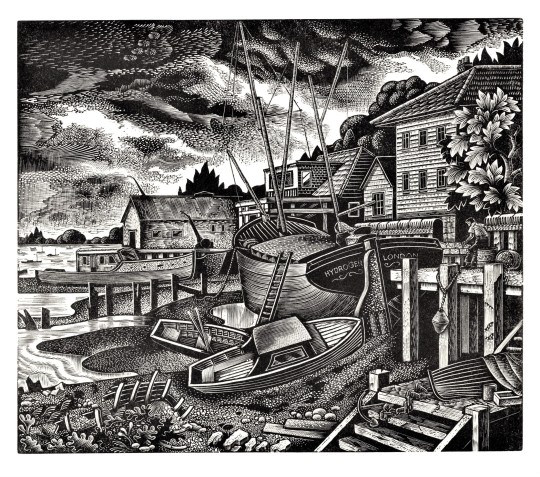
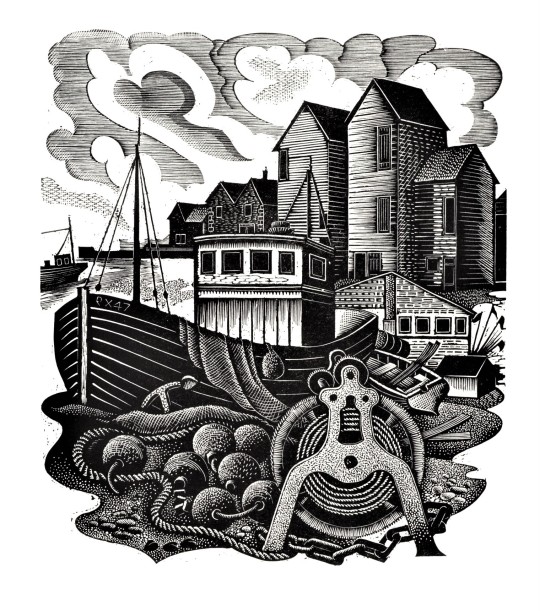
Wood Engraving Wednesday
This week we present some very rich wood engravings by English artist, educator, and wood engraver Ronald Salmond. Salmond spent the bulk of career as a teacher, serving as art master at Preston Manor School, Middlesex, from 1939-1975, and really did not begin actively making engravings until after his retirement when he was in his sixties. Salmond wrote that he studied
the engravings of John and Paul Nash, Clifford Webb, [and] John Farleigh. . . . It was Clifford Webb’s formalised treatment of trees, buildings and water that gave me a new insight into wood-engraving, whole I greatly admired the freshness and ease with which Eric Ravilious handled his tools, and the wonderful simplicity of his later work.
The engravings shown here were printed as an insert for Hal Bishop’s article “Ronald Salmond - and Old Master,” in Matrix 28, Summer 2009, pp. 33-37, which was printed in an edition of 700 copies. Of the first print shown here, Burford Bridge, Bishop writes,
In Burford Bridge [Salmond] produced a mature work, the architectural structures an integral composition rather than being part of the disposition of pattern. It is overwhelmingly rich, with an intense ‘busyness’ on the engraved surface. . . . The treatment of light, and the subtle reflections of the bridge in the water gives true depth to the picture without conflicting with the controlled emphasis of the foreground flowers or the rich display of vegetation elsewhere.
The next three prints -- Old Portsmouth, ‘The Hydrogen” at Burnham-on-Crouch, and Hastings -- represent Salmond’s favored subjects from the 1980s, harbor scenes. Salmond writes,
I have always been fascinated with harbours and boats lying on their sides at low tide; their beautiful shapes and lines made fine subjects for engraving . . . the fisherman’s gear and their drying huts ideal for my compositions . . . .
Matrix was printed by John and Rosalind Randle at the Whittington Press in England, and is a donation from our friend Jerry Buff.
View more posts from Matrix.
View other posts relating to the Whittington Press.
View more posts with wood engravings!
#Wood Engraving Wednesday#wood engravings#wood engravers#Ronald Salmond#Hal Bishop#Matrix#Matrix 28#John and Rosalind Randle#Whittington Press#Jerry Buff
71 notes
·
View notes
Text
Smartphones and their impact on written language and literacy in the deaf community
As digital technology became more prevalent in society a linguistic phenomenon known as digitalese caused concern. Anxious parents and teachers worried that text speech used on social media and instant messaging would damage the language skills of the younger population (Tagg, 2015). While the digitalese discussion was occurring in the media, another group of people were inviting the new technology with open arms.
The deaf and hard of hearing community have been hoping for technology to provide them with better communication tools for generations, but generally new inventions have fallen short of the mark. The invention of the telephone stemmed from a project intended to assist the hard of hearing and later a teletypewriter was invented but it was only able to connect to other teletypewriters (Maiorana-Basas and Pagliaro, 2004).

An Avaya 1140 TTY UniPhone (modern teletypewriter) (Source: Amazon.co.uk)
Mobile phones and their two-way text messaging technology and more recently sign language detection and speech-to-text apps have finally provided invaluable communication aids to the deaf and hearing impaired. Studies conducted into technology use have found that teletypewriters and telecommunications devices have become less frequently used while the use of smartphones and personal computers has risen (Maiorana-Basas and Pagliaro, 2004).

Speech-to-text technology (Source: Techcrunch.com)
This new technology has proven especially useful for school age children as a platform to improve their literacy skills. Many deaf children have been taught to communicate via sign language which functions differently from spoken and written languages in aspects like grammar and word order. This results in hearing impaired learners effectively trying to learn a whole new language as they learn how to write. This puts deaf and hard of hearing children at a disadvantage, a fact that has been reported by many studies over the years (Antia et al, 2020). On average hearing-impaired children develop literacy skills slower than their hearing counterparts and it is a trend that tends to continue through their academic career.

Learning phonetics (Source: National Deaf Children’s Society)
A study conducted by Akamatsu et al (2006) on deaf teenagers found that access to two-way text messaging technology afforded them with greater freedom and independence. On top of that, students reported that using their text messaging devices motivated them to improve their reading and writing skills.
Based on studies conducted in the field, the implications of smartphone technology on the education of the deaf community could be quite important. It has shown potential to enhance language learning through access to language models and transactions between readers and text (Maiorana-Basas and Pagliaro, 2004). More research is required into smartphones supporting the language and literacy learning of the deaf community but as the Akamatsu et al (2006) study showed the impact on the participants lives has been very positive overall.
References
Antia, S., Lederberg, A., Easterbrooks, S., Schick, B., Branum-Martin, L., Connor, C., Webb, M., 2020. Language and Reading Progress of Young Deaf and Hard-of-Hearing Children. The Journal of Deaf Studies and Deaf Education, Vol 25 (3), pp. 334–350
Akamatsu, C., Mayer, C., Farrelly, S., 2006. An Investigation of Two-Way Text Messaging Use With Deaf Students at the Secondary Level. The Journal of Deaf Studies and Deaf Education, Vol 11 (1), pp. 120–131.
Maiorana-Basas, M., Pagliaro, C., 2014. Technology Use Among Adults Who Are Deaf and Hard of Hearing: A National Survey. The Journal of Deaf Studies and Deaf Education, Vol 19 (3), pp. 400–410.
Tagg, C., 2015. Exploring Digital Communication: Language in Action. Taylor & Francis Group.
Wolbers, K., 2008. Using Balanced and Interactive Writing Instruction to Improve the Higher Order and Lower Order Writing Skills of Deaf Students. The Journal of Deaf Studies and Deaf Education, Vol 13 (2), pp. 257–277
5 notes
·
View notes